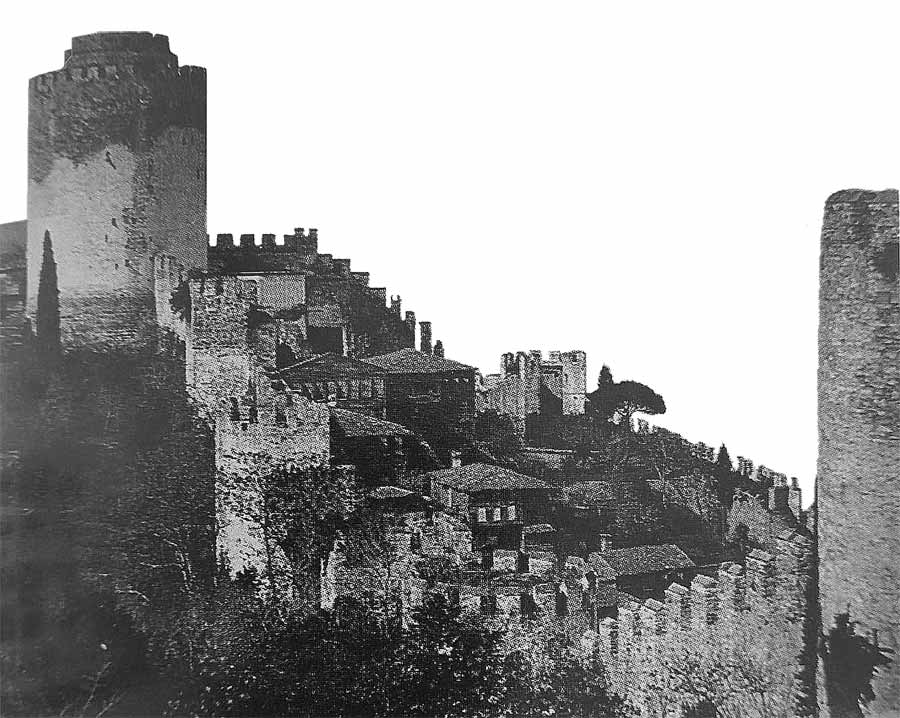

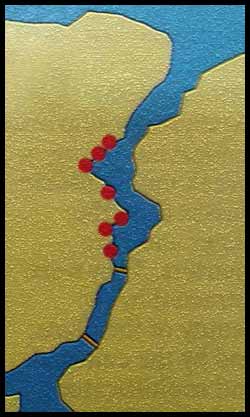
THE FATIH MEHMET BRIDGE.
The ferry now passes under the Sultan Mehmet Fatih Köprüsü, the new bridge over the Bosphorus. It is 33 feet longer than the bridge between between the hills above the two fortresses.
Fatih Köprüsü Ortaköy and Beylerbey, and spans the strait opened in 1988, exactly 2,500 years after Mandrocles built his bridge of boats for Darius across this same stretch of the Bosphorus.
YILDIZ PARK.
Here, both the Malta Köşkü, or Pavilion, and the Pembe Köşkü have been restored and transformed into elegant cafés.
The next village on the European shore is Emirğan. The village square is pleasantly shaded by plane trees and beneath them people gather to drink tea, which is particularly delicious because of the quality of the local water. Beside the square on its southern side is a Baroque mosque, constructed between 1781 to 1782 by
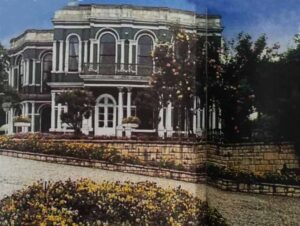
Abdül Hamit I. Above the village are the famous tulip gardens of Emirğan, well worth a visit in spring. The Turkish Touring and Automobile Club has restored a number of Ottoman kiosks in the gardens, among them the Beyaz Köşk, or White Pavilion, which has been converted into a concert hall. The others now serve as cafés.
After Emirğan, still on the European side, is Istiniye, which has a deeply indented bay that up until 1990 contained a floating dock. Istiniye is still an active fishing port, and the local fishermen sell their daily catch at a colorful market along the quay.
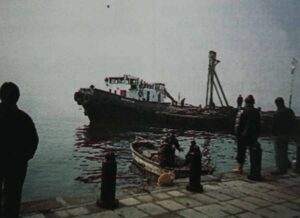
The Byzantines called this village Neapolis – New Town – which is what the Turkish name means as well, despite the great antiquity of the village. There are more churches in Yeniköy than in any other village on the Bosphorus, three of them Greek Orthodox, one Armenian Catholic, and another Roman Catholic. Yeniköy is famous for its row of terraced houses by the water’s edge. At the northern end of the village there is a stone-built mansion that was once used as the summer embassy of Austria-Hungary, and today is still Austria’s summer consulate. Beyond that lies Kalender, a hamlet amed after the order of mendicant dervishes who had a tekke, or monastery, there. A bit farther along is a huge wooden yalı 88 that serves as Germany’s summer embassy.
The next village on the European shore is Tarabya, long celebrated for the beauty of its crescent bay. During the 18th and 19th centuries, Tarabya was a favorite resort of prominent Greeks from the Fener, as well as the affluent of Pera. Originally named Therapia, meaning “cure,” by the Greek Patriarch Atticus, the village now bears the Turkish version of the same name and for the same reason – the beneficial climate.
The next ferry stop brings us to Büyükdere, which means “Great Valley.” The Byzantines called the village Kalos Agros or “Beautiful Meadow.” It was here that the knights of the First Crusade camped in 1096, before
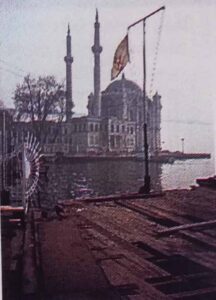
they crossed the Bosphorus on their long arduous march across Asia Minor to recover the Holy Land for Christianity.
In its splendidly restored yalı, this museum houses a rich collection of antiquities, ranging from the Bronze Age 28 up to the Greco-Roman era ● 30, along with Ottoman arts, crafts, and costumes, all beautifully displayed. The museum is dedicated to the memory of Sadberk Hanim, the late wife of Vehbi Koç, a leading Turkish industrialist.
Roads lead from both Büyükdere and Sariyer through the Belgrade Forest ◆ 356 to Kilyos, a fishing village on the Black Sea which has a sandy beach, hotels, pensione, and restaurants. The road from Büyükdere passes through one of the arches of Eğrikemer, the “Bent Aqueduct” 76, ◆357, built by Mahmut I and completed in 1732.
This is the largest village on the European shore of the upper Bosphorus, and the principal fishing port on the strait. The port and the fish market around it are delightful, particularly when the fishermen of Sariyer return after voyages that take them not only to the upper Bosphorus and the Black Sea but also to the Marmara, the Dardanelles, and the Aegean. Some of their catch is served in restaurants around the port, with tables set out on the quay in good weather.
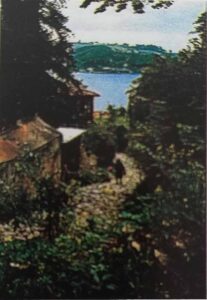 The last ferry stop on the European shore is Rumeli Kavağı. From there most ferries cross the strait to Anadolu Kavağı, the last iskele on the Asian side. There are numerous seafood restaurants all about the landings in both villages, which are popular places to have lunch during a journey along the Bosphorus.
The last ferry stop on the European shore is Rumeli Kavağı. From there most ferries cross the strait to Anadolu Kavağı, the last iskele on the Asian side. There are numerous seafood restaurants all about the landings in both villages, which are popular places to have lunch during a journey along the Bosphorus.
Since the 18th century Bebek has been a residential village where rich Istanbuli built summer houses, such as the superb Yılanlı Yalı, now restored. Today, there is also an attractive marina.
THE VILLAGE OF RUMELI HISARI: Nestling in the green countryside, the houses of this little village rise in tiers on the hillside, with cobblestone lanes that descend towards the Bosphorus.
In 1452, Mehmet II prepared to besiege Constantinople by constructing a fortress at Rumeli Hisarı. It took less than four months to build, thanks to 3,000 laborers and master masons assigned to the task. Around the turn of the 20th century, wooden houses were built within the walls of the ruined fortress. They disappeared when the site was restored in 1953.